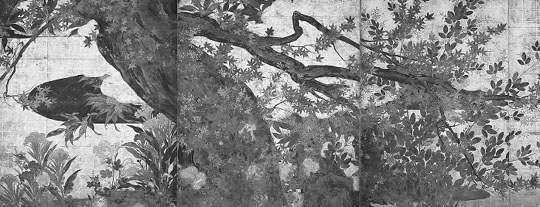The Tokyo National Museum in Ueno isn't merely a convenient place for old folks to while away an afternoon, or a safe venue to take parties of schoolchildren to on excursions. It's also a very symbolic and ritualistic space, where the final seal is set on the nation's cultural and historical image of itself. So, for a Japanese artist to be exhibited there is a kind of induction into the national cultural pantheon.
That is certainly the case with "Hasegawa Tohaku: 400th Memorial Retrospective," an exhibition that serves to enshrine the painter — whose name read in English is Tohaku Hasegawa — in the nation's cultural consciousness 400 years after his death.
As with all grand ritualistic events, there is a sense of "so it is and always has been." But while this approach emphasizes the timeless quality of Hasegawa's art, the story suffers as a consequence. The tale we are presented with here is the barely interesting one of a humble (but not too humble) provincial artist whose early works were inspired by an ardent faith in Buddhism; and who was then invited to the capital, which was then in Kyoto, where his irresistible talent soon won over discerning big shots such as Sen no Rikyu of tea-ceremony fame and the hegemon Toyotomi Hideyoshi — in the process securing his undying fame. While suitably serene, this narrative, it has to be said, wouldn't make a particularly thrilling biopic.

















With your current subscription plan you can comment on stories. However, before writing your first comment, please create a display name in the Profile section of your subscriber account page.